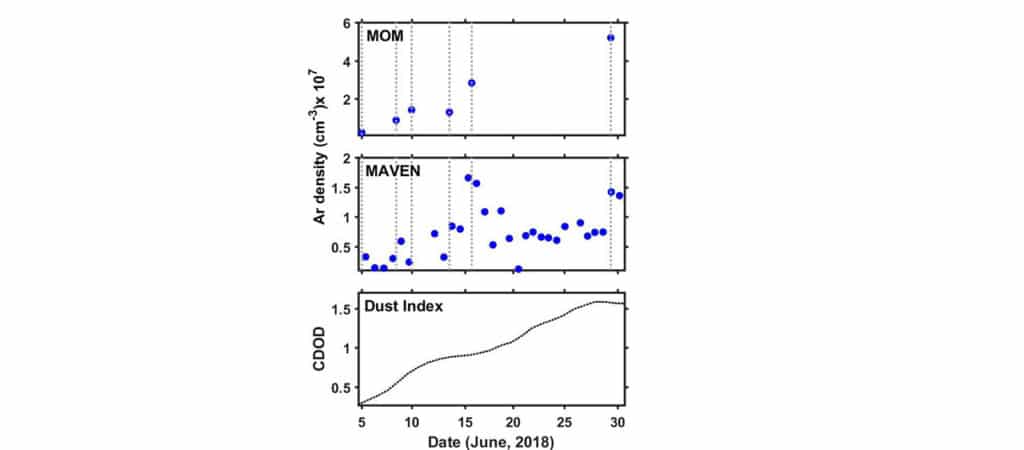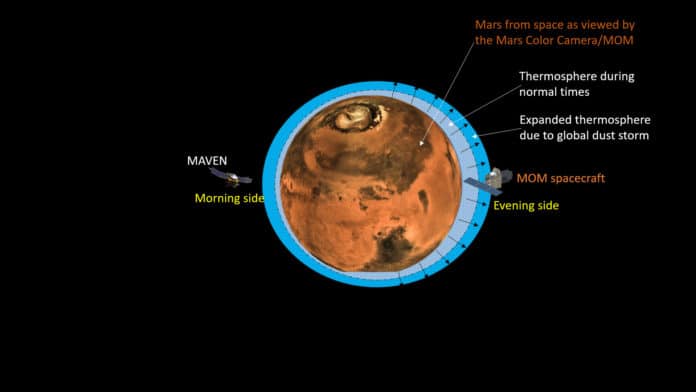Studying the Mars’ upper atmosphere is essential as it acts as a buffer zone to escape its gases to space. Toward achieving this goal, NASA’s Mars Atmosphere and Volatile Evolution (MAVEN) and ISRO’s Mars Orbiter Mission (MOM) spacecraft have been providing valuable information on the Martian upper atmosphere.
A new study based on the observation made by ISRO‘s MOM and NASA’s MAVEN suggests that Mars is losing its atmosphere to outer space at a faster rate. This loss rate, however, is altered by the changes in the upper atmospheric temperature.
During 5–29 June 2018, these spacecraft have made simultaneous observations of the Martian upper atmosphere. The spacecraft observed a global dust storm called a “planet-encircling dust event”- started growing on Mars. This dust storm has grown to its mature phase by the first week of July 2018. As a result, the effects of these global dust storms on the Martian upper atmosphere are expected to be multi-fold.
During this time, MOM spacecraft observed the evening side of Mars by diving down to altitudes as low as 155 km. The Mars Exospheric Neutral Composition Analyser (MENCA) instrument, a mass spectrometer on MOM, measured the Mars’ thermosphere’s neutral densities.
Scientists at the National Atmospheric Research Laboratory, Gadanki, analyzed these measurements and found that Mars’s upper atmosphere is undergoing warming and expansion. As the dust storm slowly engulfs Mars over a month, scientists observed that Mars thermosphere’s neutral densities increased significantly.

MAVEN, which simultaneously measures the Martian thermosphere on the morning side, also confirmed the increase.
Such a storm significantly heated and expanded the Martian upper atmosphere. The heating and expansion of the global dust storm led to a mars atmosphere quickly reaching the exobase altitude (which lies at 220 km).
Any hot gases above the exobase altitude are more likely to move to further higher altitudes and subsequently escape outer space. Based on these observations, it can be inferred that the 2018 global dust storm resulted in an enhanced escape of the Martian atmosphere.
Journal Reference:
- N. Venkateswara Rao et al. Enhanced Densities in the Martian Thermosphere Associated With the 2018 Planet‐Encircling Dust Event: Results From MENCA/MOM and NGIMS/MAVEN. DOI: 10.1029/2020JE006430
